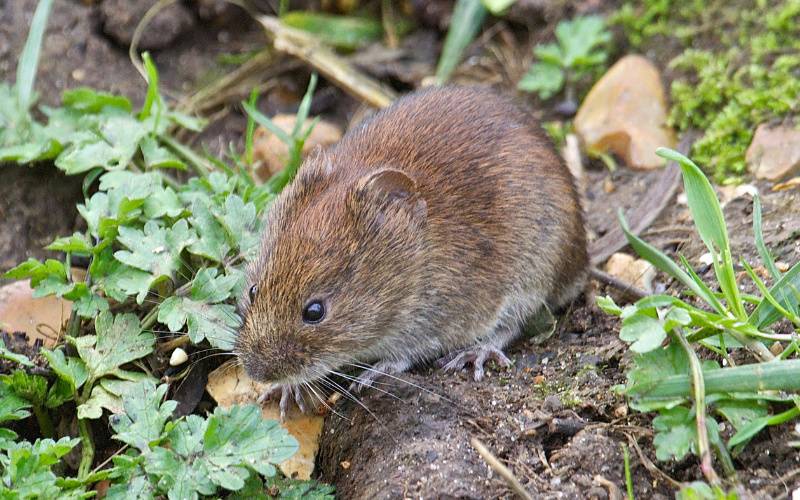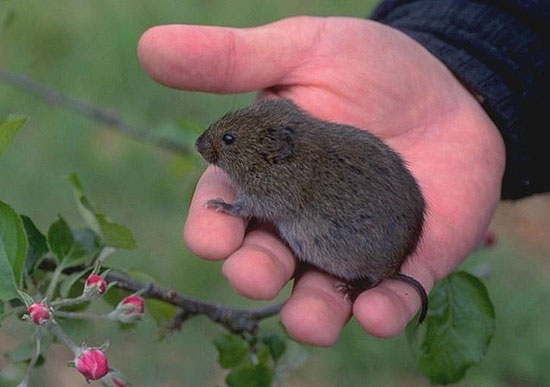Relied On Vole Control in Utah: Solutions for Your Property
Relied On Vole Control in Utah: Solutions for Your Property
Blog Article
Comprehensive Guide to Reliable Vole Parasite Control: Infestation Identification and Treatment Techniques
In the world of reliable parasite control, vole infestations position a special obstacle that demands a tactical method. These little rodents, commonly incorrect for mice, can ruin yards, yards, and plants if left unchecked. Determining the signs of vole presence and applying targeted therapy methods are essential components of an effective insect monitoring plan. By checking out the nuances of vole behavior, comprehending key indicators of problem, and examining a variety of control choices, one can establish a detailed approach to fight these evasive insects.
Recognizing Vole Habits
Vole actions is characterized by their burrowing routines and quick recreation rates, making them a tough pest to manage properly. Their quick reproductive rate additional makes complex control efforts, with ladies capable of creating several litters in a solitary year, each consisting of numerous spawn.
Voles are most energetic during the very early morning and night hours, investing most of their time foraging for food. Their tunneling practices not just disturb yards and yards however likewise make them testing to discover and remove. Comprehending vole behavior is crucial for efficient bug control techniques. By recognizing their burrow areas, keeping track of feeding areas, and applying targeted control techniques, such as trapping or habitat adjustment, vole invasions can be taken care of efficiently.
Indicators of Vole Invasion

Prevention Approaches
Executing effective avoidance methods is important in minimizing vole invasions and guarding plant life from their damaging feeding habits (vole pest control). To stop vole invasions, it is crucial to begin by eliminating possible food sources and shelter. Keep grass and greenery trimmed short, get rid of weeds and debris, and keep a clean garden or grass to make the location less attractive to voles. Mounting barriers such as equipment cloth or underground fencing can additionally assist straight from the source discourage voles from going into certain locations. Furthermore, minimizing excess dampness by dealing with leaking pipelines and making sure appropriate water drainage can make the environment less hospitable for voles.
On a regular basis checking the residential or commercial property for indicators of vole task, such as paths and delve openings, is essential for early discovery and punctual activity. If vole activity is presumed, consider utilizing traps or repellents strategically positioned near their paths. Utilizing all-natural predators like snakes or owls can additionally assist keep vole populations in check. By applying a mix of these avoidance garden enthusiasts, house owners and techniques can efficiently secure their plant life from vole damages.
Non-Lethal Control Methods
To efficiently handle vole populations while focusing on humane techniques, non-lethal control approaches supply functional remedies for minimizing vole damage in gardens and landscapes. These obstacles can be hidden at least 12 inches curved and deep at a 90-degree angle to protect against voles from tunneling underneath.

Lethal Control Options
One efficient technique for dealing with vole invasions in landscapes and yards includes the strategic use lethal control options. When encountered with an extreme vole infestation that non-lethal techniques have fallen short to consist of, executing dangerous control procedures comes to be crucial. One generally utilized dangerous control option is making use of snap catches. These traps are developed to rapidly and humanely kill voles upon activation, making them a preferred selection for lots of pop over to this site garden enthusiasts and landscapers. To increase the effectiveness of snap traps, it is advised to put them in locations where vole activity is high, such as along paths or near burrow entries. Another deadly control choice is the application of hazardous lures specifically developed to target voles. These baits contain toxin that is ingested by the voles, resulting in their ultimate death. Care must be exercised when utilizing toxic lures to protect against injury to non-target animals or pet dogs. Generally, when utilizing deadly control choices, it is vital to do so properly and based on regional laws to efficiently take care of vole infestations.
Verdict
In conclusion, effective vole parasite control needs a detailed understanding of vole behavior, identification of indications of invasion, implementation of avoidance methods, and usage of both dangerous and non-lethal control methods. By incorporating these techniques, people can effectively handle vole populaces and safeguard their property from damages. It is very important to address vole infestations quickly to stop more issues and decrease the effect on the surrounding environment.
Offered the intricate passage systems and fast recreation rates characteristic of voles, acknowledging the indications of vole problem comes to be crucial in reliable insect control. One of the key indications of vole visibility is the presence of surface runways or trails in lawn or snow, generally concerning 1-2 inches wide, created as voles take a trip in between their burrows and food resources.To effectively manage vole populations while prioritizing humane methods, non-lethal control strategies supply sensible remedies for lowering vole damages in gardens and landscapes.One effective approach for addressing vole invasions in yards and landscapes involves the strategic use of deadly control choices. vole lawn damage.In conclusion, reliable vole his explanation parasite control requires an extensive understanding of vole habits, identification of indications of infestation, implementation of avoidance approaches, and use of both lethal and non-lethal control approaches
Report this page